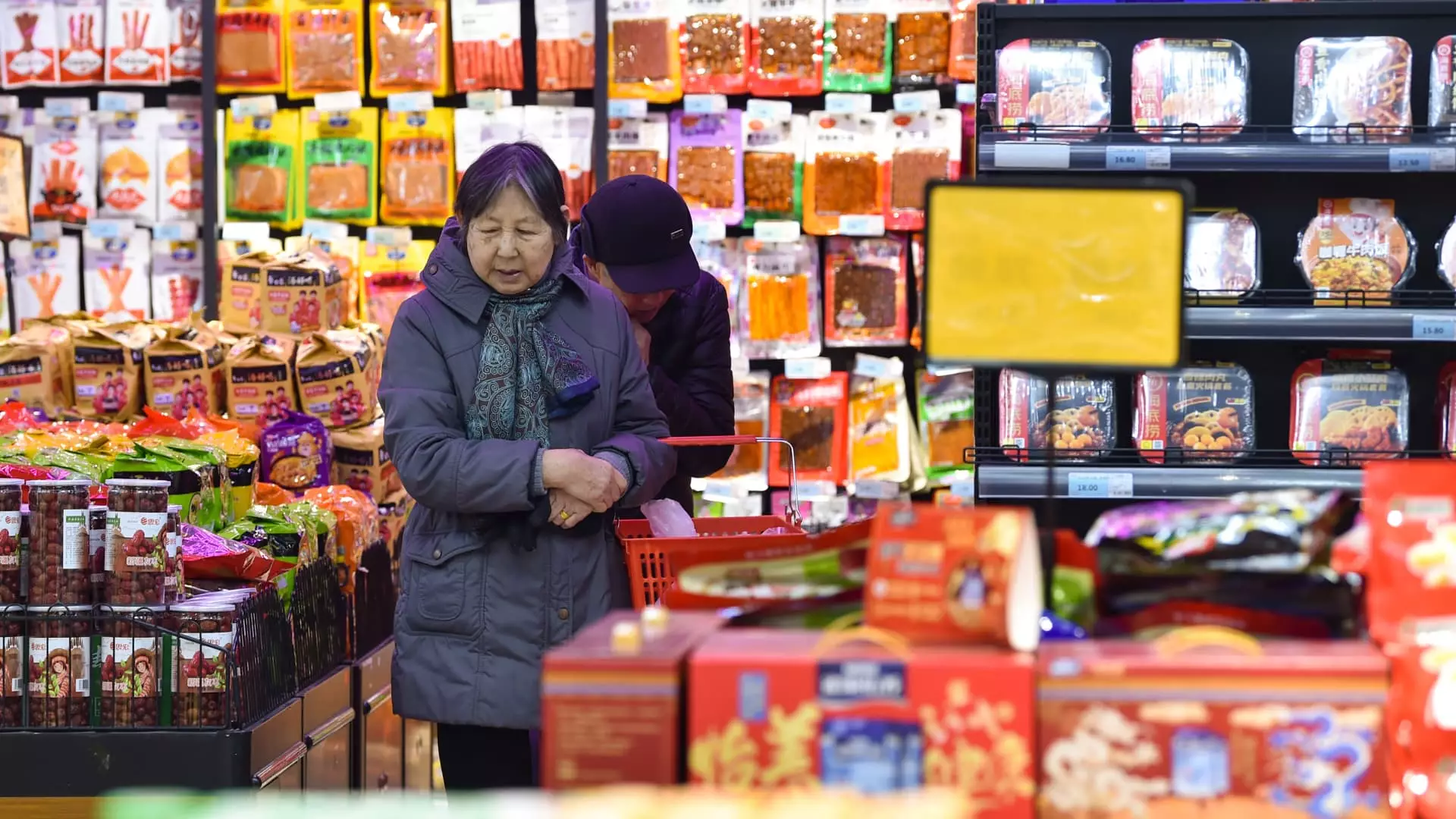In the first month of 2024, China’s economic indicators revealed a complexity that underscores both the resilience and fragility of the world’s second-largest economy. Consumer inflation saw its sharpest rise in five months, contrasting with persistent deflation in producer prices. This juxtaposition signifies a fundamental imbalance in domestic consumption against a backdrop of external pressures, particularly from trade relationships, which necessitates a closer examination of China’s economic health and future trajectories.
Recent data from the National Bureau of Statistics indicated that the consumer price index (CPI) increased by 0.5% year-over-year in January, a notable acceleration from December’s 0.1%. This uptick exceeded analysts’ expectations and reflects a seasonally affected demand due to the Lunar New Year celebrations. Traditionally, this period witnesses heightened consumer spending as households prepare for festive gatherings, often resulting in inflated food prices and related goods. For instance, ticket prices for domestic tourism saw significant increases, indicating consumers are willing to spend on experiences, albeit cautiously.
However, it is essential to dissect this enthusiasm for consumer goods amidst underlying anxieties surrounding wage stability and job security. Despite some sectors thriving—such as cinema and domestic travel—overall per capita spending demonstrated only a modest growth of 1.2%, a stark decrease compared to the 9.4% rise seen the previous year. This suggests consumers are increasingly selective in their spending habits, indicative of broader economic uncertainties.
Conversely, China’s producer price index (PPI) continued to reflect a troubling narrative, with a yearly drop of 2.3%, marking 28 consecutive months of deflation. This enduring decline suggests a significant overcapacity in the industrial sector, resulting in a sustained downward pressure on factory gate prices. Economists, including Xu Tianchen from the Economist Intelligence Unit, note that a substantial recovery in producer prices appears unlikely in the near term. This ongoing deflationary trend not only highlights the systemic issues within China’s manufacturing base but also raises questions concerning the overall health of the economy.
Moreover, the ramifications of U.S. trade tariffs under Donald Trump’s administration have compounded these issues. These tariffs add an additional layer of strain, particularly impacting exports that were previously considered a bright spot for economic growth. Analysts predict that unless these external pressures are alleviated, domestic demand must sharply increase to offset the negative impacts on industrial output.
The Outlook for 2024: Predictions and Projections
With policymakers signaling an economic growth target of around 5% for 2024, the need for strategic maneuvers becomes evident. However, the forecast appears precarious given the current economic indicators. Experts like Zhiwei Zhang from Pinpoint Asset Management emphasize that external uncertainties, including the evolving trade relationship with the U.S., overshadow domestic economic challenges. Without concerted efforts to stimulate internal demand, China’s growth could stagnate, leading to a prolonged period of economic malaise.
As provinces reveal their economic growth targets, most set below 3%, it is indicative of a collective acknowledgment among local governments of the mounting economic pressures. Policymakers must consider innovative strategies to revitalize consumer confidence and incentivize spending. Measures may include monetary easing and fiscal stimulus aimed at boosting domestic consumption, particularly in sectors most affected by external shocks.
China’s economic landscape is characterized by a complex interplay of rising consumer inflation against a backdrop of persistent producer price deflation. This dual reality underscores critical challenges for policymakers aiming to maintain growth in an increasingly uncertain global economy. Should the current trends continue without significant intervention, the nation may face a deeply rooted cycle of economic instability. Thus, the path forward will require a delicate balance between managing inflationary pressures and reviving waning consumer confidence, all while navigating the unpredictable waters of international trade relations.



Leave a Reply